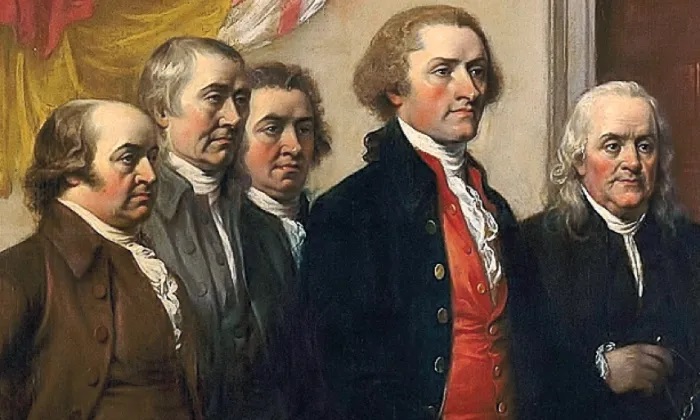A brief conversation with U.S. Representative Salud Carbajal (D-CA-24), led to a 50-minute discussion concerning health care and his participation in the Problem Solvers Caucus.
Elected to Congress in 2016, Representative Carbajal previously served three terms as a Santa Barbara County Supervisor and served in the Marine Corps Reserve. He currently sits on the Armed Services and Budget Committees.
Our conversation took place Saturday, July 29, following a week where the Senate voted down the so-called “skinny repeal” of the Affordable Care Act.

Lichtman: I want to get your reaction to what Senator John McCain said on the floor of the Senate:
“Let’s trust each other. Let’s return to regular order. We’ve been spinning our wheels on too many important issues because we keep trying to find a way to win without help from across the aisle.”
Carbajal: I thought he was right on. As a freshman congressman, there is no regular order. I don’t even know what regular is because I haven’t seen it.
The majority party decides what comes to the floor. We are not having hearings on substantive legislation. Things come straight to the floor, and we’re voting on things that I’m trying to catch up on: what it is or what it is not. So, there’s no incentive to collaborate.
So, McCain is right. Let’s work to trust one another. Let’s find common ground to move legislation forward.
I think what the Republican majority is learning is that it’s a lot harder to govern and there’s diversity in both parties. You have the Freedom Caucus, comprised of extreme financial hawks and Tea Party folks who are holding their party hostage, which necessitates their need to work with Democrats. Knowing that, they still don’t work with Democrats.”
Well, this brings us to a group you’re a part of, The Problem Solvers Caucus. How did this group come about?
Well, a year before I got there, there was a group called No Labels. It was a loose outfit that started this conversation about promoting bipartisanship. The congressional group that was part of that group disbanded last year.
This year, one of our freshman class members, Josh Gottheimer and Republican Tom Reed, who’s been there awhile, came together and started Problem Solvers, which built on the No Labels concept. The whole purpose is: let’s try to find ways to work together; find common ground on every and all pieces of legislation where we might be able to do that.”
How often do you meet?
In the last month, we’ve started meeting every week. And in the last week or two, sometimes two times a week.
The whole purpose behind the most recent flurry of meetings has been, look, it’s very likely that this health care repeal may or may not move forward. Knowing the issues that we do, why don’t we roll up our sleeves and fix the issues that need fixing in the Affordable Care Act – issues that we can agree on and put those issues forward to leadership in both our parties.
Here are some areas we agree on: stabilizing the markets, making sure that the subsidies move forward, and that there’s a mechanism that ensures they move forward; making sure that there are things we can agree on to stabilize our health care system that go beyond partisanship and actually fix and enhance the system.
How many members are part of the caucus?
There are about forty-four Republicans and Democrats. To join, you have to bring in a member from the other party.
So, twenty-two Democrats and twenty-two Republicans.
Right now, it’s a tad lopsided. I believe there are two extra Democrats, but I’m not sure they can be true members until they can bring two additional Republicans aboard.
So, the process is: you meet and discuss the issues; examine those things you can agree on; then put those items forward to leadership.
Yes, but also work as a caucus to ensure that both parties know that we’re going to stand firm together. So that way, we become a block. Just like the Freedom Caucus is to the Republican Party, we want to become a block that our votes would be so significant that it would make both parties come together and govern in a collaborative manner.
We also came up with rules. For example, if 75 percent of our caucus agrees on something, then everybody’s on board. And the reason that’s important is that it’s so easy for people to say, “Oh, I worked for bipartisanship. I’m bipartisan.” But, at the end of the day, those are messaging points. Where the rubber meets the road is where you come up with principles that make you part of the 75 percent majority, and that’s a pretty high percentage. That’s what leadership is.
Leadership isn’t being patted on the back for doing things that you’re expected to do. It means taking risks, and sometimes not getting everything that you want. That’s what we’re trying to do.
What’s been the reaction from the House leadership, most notably Paul Ryan, toward the Problem Solvers Caucus?
We have met with both Nancy Pelosi and Paul Ryan to let them know who we are and what we’re about. They were very receptive. On one hand, I think they appreciate us; on the other hand, I think we’re a thorn in their side.
How so?
Because we are a group who is trying to force them to govern from the middle, and for both sides to work together, not dealing with the extreme on the right or left.
Has there been any success so far?
I think we’re on the cusp with health care. We’ve come up with a framework. And if we agree with the guiding principles, which we have put together, items that we all agree on regarding health care, then we should move forward. I think we’re going to reach the 75 percent goal on this. Then we’re going to move forward as a block to show our party, “This is what we agree on, let’s move it!”
Wednesday: Carbajal offers his opinion about a single payer health care system?
Comments











